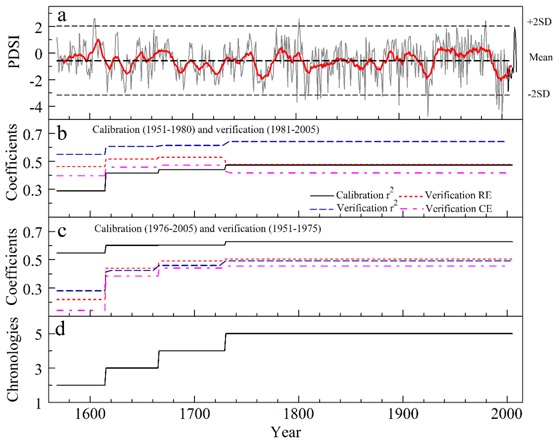The famous Silk Road played an important role in connecting China with central Asia and Europe; it was also the main route for commercial and cultural exchanges between the East and West. With the opening of the new Silk Road and the proposition of the Silk Road economic belt, the studies of the Silk Road have become increasingly significant.
By influencing its economic and social development and wars among nations, climate can indirectly affect the rise and fall of the Silk Road. Additionally, climate fluctuations play an important role in the ecological environment of Silk Road routes and directly drive route changes.
Given the high attention to global climate change, it is extremely significant to adequately understand climate patterns and change rules for the comprehensive construction of the Silk Road economic belt. Studying historical climate change can provide scientific data for the economic planning of agriculture, forestry, husbandry and other fields along the Silk Road.
Dr. SUN Changfeng and Prof. LIU Yu provided an insight on the change of dry and wet stages of the eastern region of the Silk Road during 1568-2014, using five tree-ring chronologies and an optimal information extraction method.
After smoothing using an 11-year moving average, many fluctuations emerged at the decadal scale (fig.1). During the past 447 years, there were seven dry periods (1616–1622, 1629–1645, 1682–1730, 1760–1778, 1805–1884, 1919–1933 and 1990–2009) and seven wet periods (1573–1615, 1623–1628, 1646–1681, 1731–1759, 1779–1804, 1885–1918 and 1934–1989).
The dry periods well documented famous droughts in history. The ‘Chongzhen drought’ at the end of the Ming dynasty occurred during the drought period 1629–1645. This drought resulted in serious famine in Shaanxi, which led to peasant uprising and accelerated the downfall of the Ming dynasty. The ‘Kang-Yong disaster’ during the Qing dynasty, the ‘Ding-Wu famine’ during Guangxu’s reign, and the serious drought during the 1920s were all recorded during the dry periods 1682–1730, 1805–1884 and 1919–1933, respectively.

Fig.1 (a) PDSI reconstruction for the eastern region of the Silk Road during the time period from 1568 to 2005; (b) and (c) the time varying split calibration and verification results; (d) the numbers of chronologies used in each interval. For (a), the red bold line represents the 11-year moving average; the black line indicates the observed PDSI from 2006 to 2014; and SD represents the standard deviation of the reconstructed PDSI during the period from 1568 to 2005. For (b) and (c), RE and CE represent the reduction of error and the coefficient of efficiency, respectively. (Imaged by SUN Changfeng, et al.)
Significant interannual periods of 2.1-3.8 years were very similar to the cycle of ENSO and decadal variability, with a spectral peak of 23.8 years, might be related to the PDO. This indicated that drought in this region might be affected by ENSO and the PDO. By comparing the reconstructed PDSI with the El Ni?o-Southern Oscillation (ENSO) and Pacific Decadal Oscillation (PDO) at the multidecadal scale(fig.2), it was discovered that when ENSO and the PDO were in phase (i.e., high PDO/warm ENSO phase or low PDO/cold ENSO phase), the study region tended to be dry or wet more often, respectively, especially before 1850. The influence of ENSO and the PDO on the decadal variability of drought was affected by global warming.
This study was useful for studying the history and culture of the Silk Road and provided scientific data for economic planning along the Silk Road economic belt. To better understand the effects of droughts on different ecological systems and human activities, future studies examining past drought changes with longer histories and wider spatial coverages of the Silk Road are still needed.

Fig.2. Comparisons among the PDSI reconstructed in this study, PDO (Shen et al., 2006) and ENSO (Cook et al., 2008). The bold line represents the 20-year low-pass filtered data. The red and gray-shaded areas represent inverse and similar fluctuations, respectively, between PDSI and PDO and ENSO. (Imaged by SUN Changfeng, et al.)
A study published in Ecological Indicators.
Contact: Bai Jie, Institute of Earth Environment, Chinese Academy of Sciences, Xi'an, China. Email: baijie@ieecas.cn
 © 2015 Institute of Earth Environment,CAS
© 2015 Institute of Earth Environment,CAS Address:No. 97 Yanxiang Road, Xi'an 710061, Shaanxi, China

 Location :
Location :